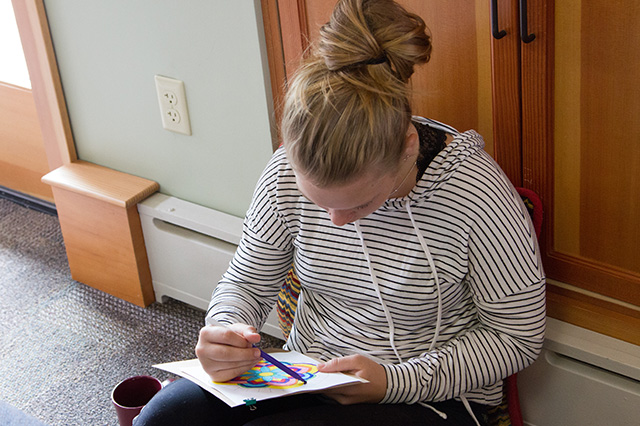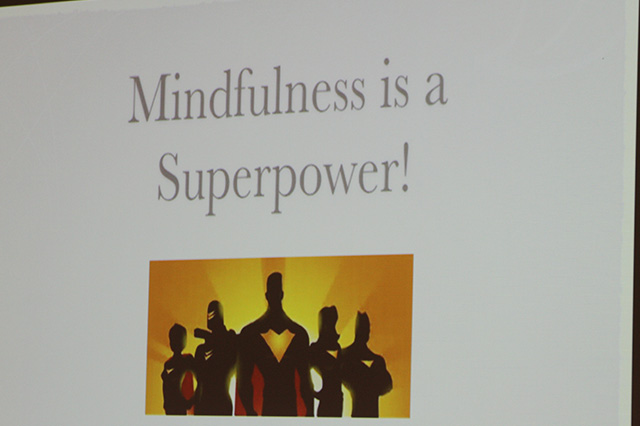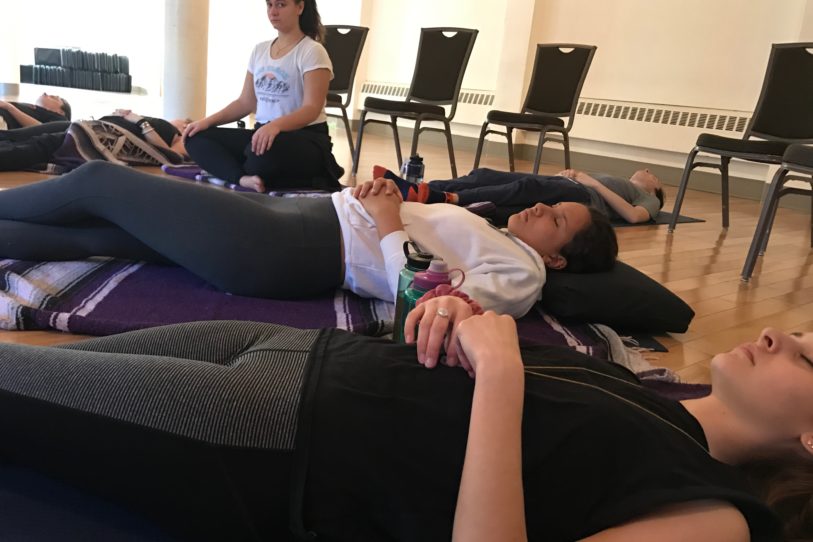In the fast-paced world we live in, it is no surprise that members of our community welcome the refreshment that comes from a few moments of mindfulness. Whether at a midweek pause at lunchtime, a post-work yoga class or in the Mindfulness and Health class, mindful meditation is appreciated and is finding a more formal place in our school culture. Our faculty have integrated thoughtful pauses into their curriculum and community members often walk across campus seeking clarity from the fresh air.
Teaching with Intention
Today, like so much of what we do at New Hampton, we are increasing our intention around mindfulness practice. Learning to still the mind and be present is a skill that can be learned. John Kabat-Zinn, a leader in the field of mindfulness, refers to this practice as purposeful, non-judgmental attention to the present moment. This sounds a lot easier than it is. Students and adults live much of their lives on auto-pilot, rushing from commitment to commitment, often allowing conditioning and emotions to guide reactions. Learning to pause and pay attention in a is increasingly essential to living a thoughtful and productive life.
The famous psychologist, William James once said in Talks to Teachers on Psychology:
“The faculty of voluntarily bringing back a wandering attention, over and over again, is the very root of judgment, character, and will. No one is master of himself if he have it not. An education which should improve this faculty would be the education par excellence.” James was onto something in the 1890s. Without knowing it at the time, he was speaking to exactly what we are working toward in schools today.

About Mindfulness
Mindfulness practice holds its roots in ancient Eastern contemplative traditions and has emerged more recently in our culture as a way to reduce stress and promote positive mental health. Integrating mindfulness in schools, to a generation that is more and more distracted, is a natural fit and regular practice has been shown to improve student success, allowing for sustained attention, the reduction of self-centeredness, and improvement of self-regulation (Zylowska).
Mindfulness teaches us to slow into the present moment. Attending to your breathing softens and relaxes the body, moving from the sympathetic to parasympathetic nervous system response. It fortifies our ability to release the conditioned fight-or-flight response and elicit instead, a sense of awareness in the present moment. With just eight weeks of committed practice, a Harvard/MGH Study reported an increase in gray-matter density in the hippocampus, the section of the brain responsible for learning and memory, and a decrease in gray-matter density in the amygdala, the section of the brain with a role in anxiety and stress.

Practice in Action
At New Hampton School, Mindfulness and Health students regularly engage in sitting practice and mindful movement. Students learn to tune into their breath, discover body awareness and grow their awareness to follow sensations that emerge. Students also use simple practices such as the 7/11 breath that can be easily taken “on the road” to help quell test anxiety, relax before bedtime, “get in the zone” before a stage performance or concentrate for a foul shot on the athletic field. Walking meditation and yoga are also practices offered on campus. Sometimes focusing the breath through movement is an easier starting place for students.
Ellen Langer, the first woman to make tenure in Harvard Medical School’s Psychology department and “Mother of Mindfulness”, suggested that mindfulness unlocks creativity, enhances performance, improves health and increases life satisfaction. People who demonstrate a measure of mental flexibility are able to respond to life’s demands more adeptly, and as a result, are more productive and less likely to fall into the traps of anxiety and depression. By teaching this practice to teenagers, we are providing important skills for health, wellness, and resilience as they grow older.
Contributed by Sara Tyson, Academic Support Faculty and Mindfulness Instructor




